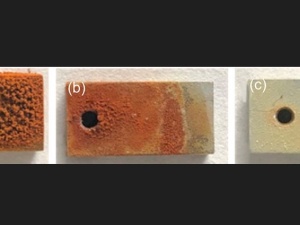Influence of Cathodic Polarity During Electrocleaning Process on the Brown Stain Defect Formation After Skin Pass on Cold-rolled Close Annealed Steel
Abstract
Skin pass rolling is considered as the final forming stage in cold-rolled close annealed steel. Surface properties and flatness are the key attributes for automotive customers. Efficient skin pass rolling overcomes surface defects that lead to material rejection. This study portrays a brown stain defect with higher defect severity. The brown stain defect is observed in a few coils that are processed through alkaline electrocleaning (ECL). Coils bypassing ECL do not show such defect. Defect characterization through scanning electron microscopy, Fourier transform infrared spectroscopy, and Raman spectroscopy shows initiation of oxidation of steel substrate. The presence of skin pass fluid residues in the defected area is the root cause for the stain formation. Techniques such as glow discharge optical emission spectroscopy, Kelvin probe, Raman spectroscopy, and electrochemical tests emphasize the role of final electrode polarity in ECL with the nature of passive oxide film formed when skin pass fluid is applied on the steel surface. This study reveals that skin pass fluid applied on anodically cleaned coils provides a uniform passive surface that restricts the defect formation.
Full article:
Source: Preview Image: Zeffss1/iStockphoto



